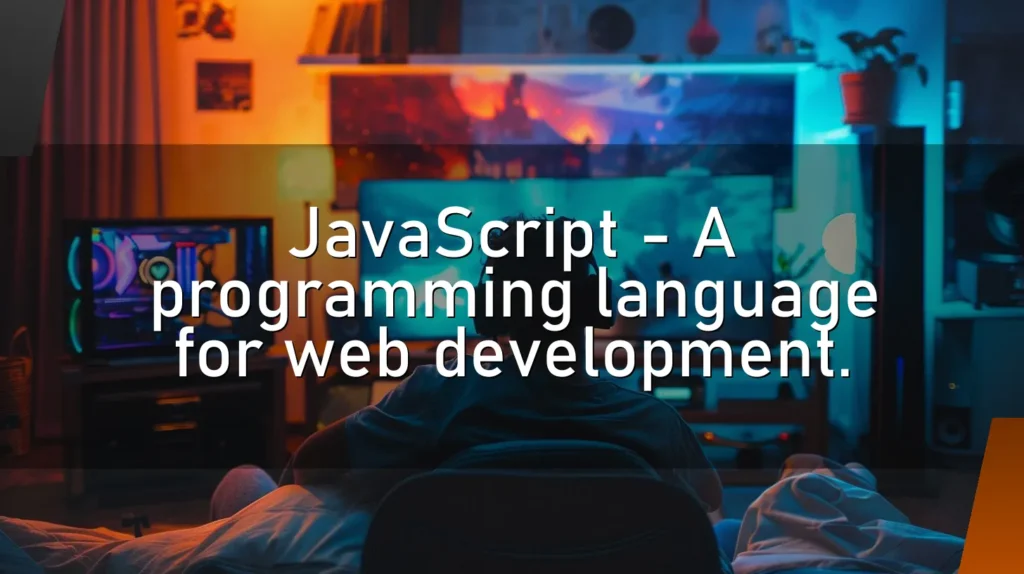JavaScript – A Programming Language for Web Development
Introduction
Ah, JavaScript! If you’ve ever wondered who’s the magic behind those fancy dropdown menus, slick animations, and interactive elements on websites, it’s our good friend JavaScript. This programming language has been spicing up the web since the mid-’90s, and trust us, it’s here to stay. So grab your favorite caffeinated beverage, sit back, and let’s dive into the wonderfully wacky world of JavaScript.
How a Nerd Would Describe
JavaScript is like that one quirky friend who’s always down for an adventure. It’s a high-level, interpreted programming language that’s loosely typed and dynamically interpreted. While JavaScript started as a client-side scripting language to make web pages interactive, it has evolved into a full-fledged programming tool that can also handle server-side tasks, thanks to Node.js. 🌐
This Chapter is for a Simple but Concrete Explanation
Alright, let’s put on our everyman hats. JavaScript is essentially the glue that ties all the cool stuff on a web page together. Think of HTML as the skeleton (it gives structure), CSS as the skin and clothes (it makes everything look pretty), and JavaScript as the muscles and nerves (it makes things move and react). 🦾✨
🔍 Details
JavaScript is one of the three core technologies of web development, alongside HTML and CSS. It runs in your browser, which means it doesn’t need to be compiled. With JavaScript, you can create everything from simple alerts to complex web applications.
Key Features:
- Interpreted Language: No need for a separate compiler.
- Event-Driven: JavaScript can respond to various events (like clicks and keypresses).
- Asynchronous: Makes it easier to handle tasks like data fetching without freezing the browser.
- Prototypal Inheritance: Objects can inherit properties and methods from other objects.
Other Similar Words Which Nerds Use
- JS: The cool, hip abbreviation.
- ECMAScript: The standard that JavaScript follows.
- Node.js: JavaScript on the server-side.
- Vanilla JS: Pure JavaScript, without libraries or frameworks.
- ES6/ESNext: Versions of ECMAScript.
👍 Correct Usage
- Client-Side Scripting: Making interactive web pages.
- Server-Side Scripting: Using Node.js to build backend services.
- Game Development: Creating browser-based games.
- Mobile App Development: Using frameworks like React Native.
🛑 Wrong Usage
- Spaghetti Code: Writing tangled, unmaintainable code.
- Ignoring Scope: Not understanding global vs. local scope can lead to bugs.
- Blocking Code: Writing synchronous code that blocks the main thread.
- Overusing Libraries: Sometimes plain JavaScript (Vanilla JS) does the job just fine.
➕ Advantages
- Versatility: Can be used for both front-end and back-end development.
- Large Community: Tons of resources, plugins, and frameworks.
- Interactivity: Adds life to static web pages.
- Asynchronous Processing: Handles multiple tasks efficiently.
➖ Disadvantages
- Security Risks: Being so widely used, it’s a common target for attacks. Always sanitize inputs!
- Browser Compatibility Issues: Not all browsers interpret JavaScript the same way.
- Performance: Heavy JavaScript can slow down your page.
- Learning Curve: Understanding concepts like closures and prototypes can be tricky.
⁉️ FAQ
Q: Is JavaScript the same as Java?
A: No, JavaScript and Java are about as related as a kangaroo and a banana. 🍌🐾
Q: Can JavaScript interact with HTML and CSS?
A: Absolutely! JavaScript can manipulate HTML and CSS to create dynamic web pages.
Q: Is JavaScript difficult to learn?
A: It has its quirks, but overall, it’s pretty beginner-friendly. Just remember, practice makes perfect!
👌 Conclusion
In a nutshell, JavaScript is the Swiss Army knife of web development. It started as a humble scripting language but has grown into a versatile tool capable of handling both frontend and backend tasks. Sure, it has its quirks and learning curves, but the pros far outweigh the cons. So whether you’re a seasoned developer or a curious newbie, diving into JavaScript is a decision you won’t regret.
And remember, with great power comes great responsibility. So code wisely, sanitize your inputs, and may the JavaScript be with you! 🖖💻
Happy coding! 🎉







